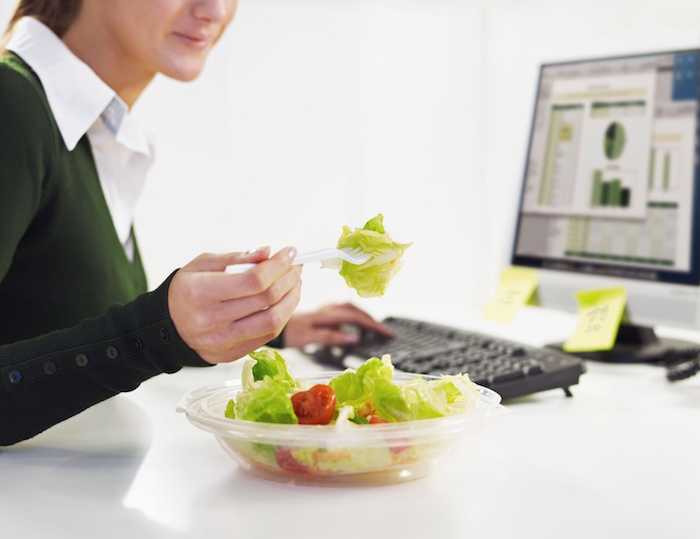In our hectic day-to-day lives sometimes it can be a struggle to make healthy food choices when we are always on the go. I’ve looked up some general guidelines on how to decide what to eat for each meal (and snacks) and I also have a few suggestions for meal options when you are short on time or can’t make it home to cook.
I’m sure you’ve already heard that breakfast is the most important meal of the day, it provides you with the fuel and energy to go about your daily routine. Yet, oftentimes, people skip this meal. They claim they don’t have time or that they aren’t hungry yet. A good breakfast should be a carbohydrate with some protein. Aim for ~500 calories and try to get those nutrients from three different types of food.
Breakfast options:
- Whole-grain toast with peanut butter and a glass of low-fat milk
- Healthy cereal with milk and added fruit
- Instant oatmeal
- Eggs with fruit salad, or omelet with vegetables
- Yogurt with added granola or fruit
- Banana with peanut butter and a glass of low-fat milk
- Dried fruit and nuts or trail mix
Most people, especially active individuals, should eat around every 4 hours. When planning lunch, again, aim for ~500 calories from three different types of foods.
Lunch options:
- Turkey sandwich and small salad
- Peanut butter is a great addition to sandwiches or fruits because it promotes satiety and will keep you fuller, longer
- Salads are popular, but be careful not to use a fatty dressing and be sure to include plenty of different veggies and add a protein such as chicken, salmon, or cottage cheese for a sufficient number of calories
- Pita with low fat cheese, cottage cheese, or hummus
- You can also pre-plan to pack leftovers from dinner the night before
If you get hungry in between meals, it’s good to snack on healthy, quality foods. You should try to keep some small, non-perishable snacks with you at all times, either in your desk drawer, car, or purse. If these healthy foods are always available you will be less likely to binge on sugary, salty snacks from the nearby vending machine.
Snack options:
- Dry cereal
- Instant oatmeal
- Whole grain crackers (with peanut butter)
- Fruits
- Yogurt (add fruits or granola for flavor)
- Snack bars (with healthy ingredients)
- Trail mix (granola, nuts, and dried fruits)
- Sandwiches (hummus, peanut butter, turkey, tuna)
- Hard-boiled egg
In most households, dinner is the largest meal of the day. It doesn’t need to be that way, you should be placing more emphasis on the earlier meals of the day, breakfast and lunch. For an active female who needs about 1,500-2,000 calories a day, dinner should be ~650 calories and contain as many of the following: grain, protein, vegetable, fruit, and dairy. Many of the previous options will also fit as a wholesome dinner.
Dinner options:
- Broth based soups are easy to heat up if you have a microwave or stove
- Baggie of vegetables with hummus
- Whole grain crackers with cheese
- Almonds with fruit
- Yogurt with fruit
- Make a sandwich with a lean protein and low-fat cheese on whole-grain bread with lettuce, tomato
- Pre-cook some meals for the week such as grilled chicken and vegetables with brown rice
These are relatively basic suggestions but try to focus on swapping out processed foods with healthier, more quality food options. This is easiest done with some prior planning.
- Try to figure out a menu or meal plan for the week ahead
- Keep leftovers or pre-planned meals in single serving containers that are easy to grab on the go
- Pre-cut or pre-wash fruits and vegetables for quicker meal prep
Source: Nancy Clark’s Sports Nutrition Guidebook, Fourth Edition. Nancy Clark, 2008.

